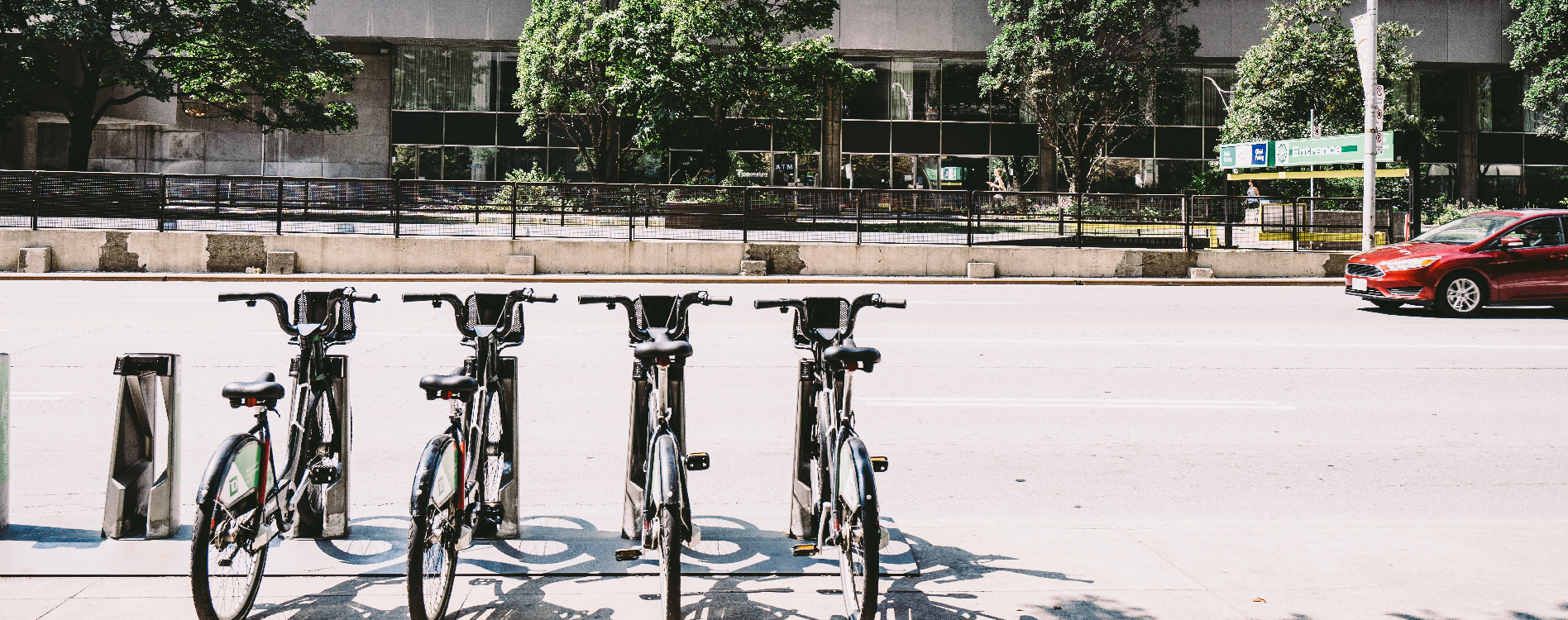
This article is a snapshot of the current state of development, mobility and parking. These three domains are highly interdependent and formulate how we experience places. It is my hope that what I have provided gives some insight into where we currently are and where we are going with the development of communities across America.
Urban sprawl: A 20th century approach to development
From the beginning of the 20th century to as recently as 2012, urban sprawl was the dominant urban planning principle that guided the development of densely populated land areas. Urban sprawl is centered on the idea of developing a high-density Central Business District (CBD) and subsequent low-density dwelling areas, commonly known as suburbs.
Developing communities around this urban economic model lends to a street network that begins in the CBD and grows outward, connecting the surrounding suburban areas. Metropolitan areas designed in this manner naturally drive single-occupancy vehicle usage, due to the long distances and diverse locations between where people live, work and enjoy entertainment.
As American cities continued to expand outward, street networks that service these communities became congested, causing increased emissions, longer commute times, decreased quality of life and depletion of natural resources. Along with these transportation-related impacts, high capital investment and large land usage compounded the need for a new development dynamic.
A paradigm shift: Live, work, play
The market forces described above have facilitated a new urban dynamic that focuses on the creation of mixed-use developments. This planning principle allows people to live closer to work, spend less time commuting and spend more time at home enjoying the lifestyles they have—enforcing the model Live, Work, Play. Examples include:
- Atlantic Station; Atlanta, Georgia
- Miami World Center; Miami, Florida
- Century Square; College Station, Texas
- One Loudon; Ashburn, Virginia
The examples above display a vibrant concept: infill developments comprising multi-family and zero lot lines housing units, modern office buildings and attractive entertainment options.
A new approach to transportation: Multi-modal mobility
Constraints of the predominant development that exists today (urban sprawl) and the need to accommodate the transportation demands of emerging developments (Live, Work, Play) has created demand for a multi-modal approach to mobility. Multi-Modal Mobility is the use of multiple transportation options within an ecosystem (city, town, sub-neighborhood, etc.) or multiple transport options during a commute.
Urban sprawl creates landscapes where people need to commute longer distances to get to the places they want to be. Using only vehicles for these commutes has congested street networks that were insufficiently designed for increases in population. To avoid traffic congestion, transportation consumers have adopted the use of multiple modes of transit to get from place to place.
For example, it’s not uncommon for people to begin their trip in a car, park that car at a transit station, commute from the transit station via bus or train and finish their trip from a transit station to their destination via a ride-hailing service. In this scenario, commuters would use three different modes of transportation.
The shift in the development dynamic to multiple-use facilities in proximity to one another is also demanding a multi-modal approach to transportation. Live, Work, Play has created a demand for transit options that fulfill the need for short trips. The transportation systems that fulfill this new demand include traditional modes of transportation (cars, trains, buses, etc.) but also newer emerging options (Transportation Network Companies/“TNCs” such as Uber and Lyft, e-scooters, e-bikes, bike sharing and the like).
Parking evolution to meet the demands of a new transportation ecosystem
As development and mobility continue to evolve, so will the parking environment. The desire to decrease emissions, shorten commute times, increase quality of life and efficiently use natural resources has lessened the appeal of single-occupant vehicle trips while making alternative modes of transportation more useful and attractive.
These trends have and will continue to impact the demand for traditional parking, but the impact is greatly dependent upon macro and micro economic factors and trends across built environments. The following parking initiatives can currently be observed in various parts of the country:
- A decrease in parking requirements by municipalities
- Repurposing of excess parking supply to green spaces, recreational facilities or Mobility Centers
- A shift in design principle of new structures to allow for easy repurposing of parking structures as demand continues to decrease
- Dedicated parking spaces for TNCs within structures
To encourage more sustainable parking and mobility, the Parksmart Certification Standard details how parking structures can adapt to these trends. The following are some of the initiatives recognized by Parksmart:
- Shared parking: Managing parking spaces more efficiently among user groups with differing peak parking demands. Shared parking maximizes use of spaces throughout a parking facility’s operating hours.
- Mass transit: Locating parking structures in proximity to—or providing a shuttle service to—rail, bus, light rail, trolley, ferry or other mass transit options.
- Car sharing: Allocating spaces within a parking structure for use by car-share vehicles.
- Bicycle parking: Encouraging bicycle trips as an alternative to single-occupancy vehicle use, with bicycle parking and amenities such as showers, changing rooms and mechanic stations.
From here to there
From the 20th century to today, there have been astronomical advancements in development, mobility and parking. We are currently in a state of rapid innovation that will forever change how we experience places across the country. As development principles change, mobility will evolve. As mobility evolves, parking will change. It is an exciting time in history, and what comes next will be beyond what we can currently conceive. If you decide to take a seat and be a witness, buckle up—what we see next should be for the ages.
